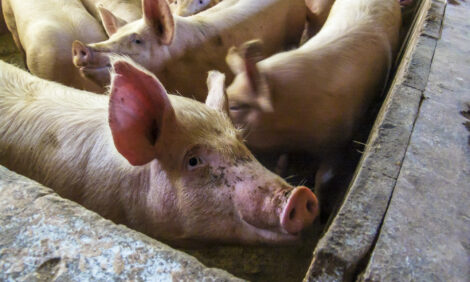



CME: Differences in Beef and Pork Retail Prices
US - CME's Daily Livestock Report for 12 March 2009.Please note that today’s E-Live Cattle volume set a new record at 26,381 contracts. This year has
seen some of the highest volumes ever for E-Live Cattle and growing volume for E-Feeder Cattle. CME Group
thanks you for your increasing usage of electronic trading! For more information about electronic trading and the
CME Group’s Globex electronic trading platform, please click here.
One of our readers, citing a report earlier this week that Kroger’s quarterly earnings were up 8 per cent
and recent reports that Wal-Mart, Sam’s Club, Costco and other discount chains’ business is booming,
posed the question “Is there something wrong if producers and packers are doing as badly as you depict
and retailers are doing so well?“ That’s a good question and one that is often asked by livestock producers
when things are tough. USDA publishes monthly estimates of farm to retail price spreads with farm, wholesale
and retail values computed on a retail weight basis. The constant weight units allow the prices at subsequent
levels to be compared to get an idea of each level’s gross margin situation. To get the data, readers can just click here for “BLS-based Retail Meat Prices“. The data for beef and pork appear
in the charts below. Please note that the final observations on the charts are for January — in the middle of the
recent run of low gross margins for pork packers and before beef margins fell sharply in February.


The first thing that jumps out of these charts is their dramatic difference. Beef farm shares average 51 per cent
of retail price while the farm share for pork is only 35.4 per cent. Pork farm-wholesale shares are about 50 per cent larger than
those for beef while the pork wholesale-retail share is 20 per cent larger than that of beef. Why the differences? First,
wholesale pork prices here are not fully processed pork cuts and thus a portion of the processing margin is actually
included in the wholesale-retail share. Second, pork involves much more processing that does beef. Conversely,
that means that beef producers products — cattle — are more similar to the final retail product and thus beef
producers get a higher share of the retail dollar. Third, the farm-wholesale share tends to be more stable. If you
think about it, that’s logical since packers are middlemen constantly arbitraging markets. They can’t do it instantaneously
but they can do it more quickly than can retailers or producers.
These charts do show that the wholesale-retail shares for both species have increased in past months.
But they also show that the levels of these shares are still within their historical ranges. What is interesting is that
the most recent low for the wholesale-retail share for pork was in August 2008 and the recent low for beef was in
July 2008 — just as both retail price series neared record highs in September. One would think that record-high
prices would have meant record high wholesale-to-resale spreads but they did not and this spread has grown
since September as retail prices have fallen slightly and wholesale prices have fallen sharply. But are these bad
for producers? If they persist, perhaps. But one thing that still-high retail prices and healthy wholesale-retail
spreads provide is space for wholesale and farm level prices to rise quickly. If retail prices had been cut sharply,
any farm or wholesale price increases would have to shoved all the way through the consumer level — to a
group of consumers who are not too keen on spending more money at the moment. The wholesale-retail share
tends to be the shock absorber and producer and packers hope it has a shock to absorb soon.








